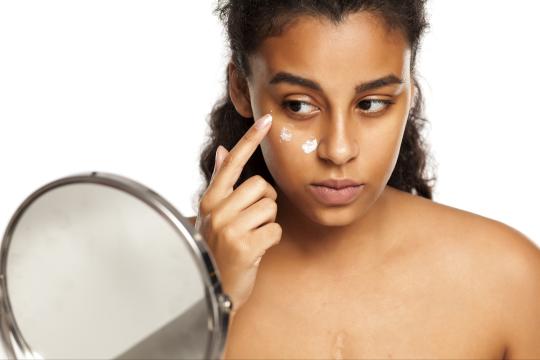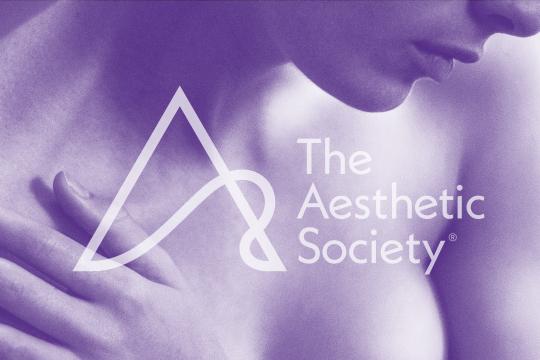
How many times will a flawless complexion be likened to a baby’s bottom before we finally catch on that the skin on our butts deserves its own infantile glow? Wordy? Yes. Wise? Also yes. So today we’re going to take a look at the importance of skincare for your butt and address 3 common afflictions that might be troubling your tush.
Butt lifts, fat transfers, butt augmentation, liposuction—surgical procedures to accentuate and sculpt the butt have seen a precipitous rise in the last 5 years alone. Add to that the vast array of booty-targeted workouts, cosmetic products (exfoliators, cellulite smoothing creams and yes, even sheet masks), and spa treatments—it’s clear that butts are a big business. But is it really necessary to target the dermis on your derriere? Yes. And here’s why.
Skin is skin—and regardless of where on the body it resides, it deserves some TLC. It is the biggest organ of our body, after all. The impossibility of getting a 180 degree view of your butt may keep you from seeing any skin issues that might otherwise jar you into action, but that doesn’t mean that those issues aren’t there. In fact, if you consider the environment your poor tushy spends most of its time in—encased in too-tight clothing or chaffing underwear, and oftentimes drenched in sweat from a workout or a hot summer day—it becomes pretty clear why the outer rind of your caboose would need some special care.
So let’s jump right in about some of the most pervasive skin issues that could be keeping your bottom from it’s full beautiful potential, shall we?
Acne:
Not exactly an uncommon skincare issue, acne is a big one when it comes to conditions affecting the dermis on your derrière. Think about it. The skin on your backside doesn’t get the air flow the rest of your skin gets. Instead, it spends the majority of its time covered in the aforementioned constricting clothing—which can quickly lead to sweating, chaffing, bacteria and clogged pores. A pimple on your rear can dive deep into the dermal layers of your skin resulting in cysts and boils—all of which can lead to scarring.
What to do? Well, avoiding tight clothing is one way to stave off any resulting butt acne, but since gym wear isn’t exactly known for its breathability, you might also consider showering immediately after your workout. Antibacterial soaps and/or benzoyl peroxide pads can help decrease the risk of excess acne-causing bacteria, and regular exfoliation with a topical product containing salicylic acid to help your skin shed dead cells more affectively can also help. Stay away from excessive scrubbing and rubbing though, as that can cause even more irritating and exacerbate the problem.
And if that isn’t enough? Just like severe acne on your face, the best answer might be a visit to your doctor. They can prescribe a more intense treatment program of prescription strength topical and possibly antibiotics to get the condition under control, and then treatments like microdermabrasion, chemical peels and/or laser treatments to reduce any visible scarring.
Keratosis pilaris:
Another common and unfortunate skin condition that might be rearing (#sorrynotsorry) its ugly head on your bottom is keratosis pilaris. This skin condition occurs when the keratin that’s supposed to be protecting your skin from infection decides instead to form scaly plugs that block the opening of the hair follicle (#overachieving). The result? Tiny, chicken-skin-like bumps, often on the butt, thighs and backs of the arms. If you’ve seen keratosis pilaris or felt it, you know exactly what it is—often discolored red or brown, sandpaper-esque or scaly to the touch. Shout if any of this is screaming #skingoals, okay? (*crickets) That’s what we thought.
The cause isn’t somewhat unclear—genetics, seasonal changes, excessive irritation or dryness, ugh. What we do know is that keratosis pilaris can be a chronic, lifelong condition, and while it’s not usually necessary to seek treatment for it, that doesn’t mean you just have to live with it.
Avoiding tight fitting clothing can help, as friction to the area will only make it worse. Limiting the time you spend in a too-hot bath or shower can also help as hot water can strip your dermis of essential oils leading to dryness, which is also tied to keratosis pilaris. Regularly using a good moisturizer can help, and firing up the humidifier to keep your environment moist isn’t a terrible idea either.
Keratosis pilaris can benefit from regular exfoliation with a topical containing alpha hydroxy acid, lactic acid, or salicylic acid to help loosen and remove dead skin cells. Your doctor may also prescribe a topical retinoid to help promote cell turnover and prevent blocked hair follicles. Extreme cases can benefit from laser or light treatments too, but the best resource is a visit with a trusted dermatologist or plastic surgeon who can suggest the appropriate course of action.
Stretch Marks:
Now let’s talk about stretch marks. You know what they are—long, rippled marks (also called stria) that run across the arms, breasts, hips, stomach and butt. These streaky marks occur when the skin is asked to stretch beyond its capacity due to excessive weight gain and/or loss, normal growth spurts, pregnancy, and or quick muscle growth.
Along with the irregular texture of stretch marks comes a variety of attention-grabbing colors—white, red, bluish-purple, brown—all vying for attention, when you’d really rather they just stayed out of the spotlight.
Like acne and keratosis pilaris, stretch marks can be addressed with at-home treatments like retinoids, but for more aggressive results, a consult with your board-certified plastic surgeon is in order.
Your doctor may start by recommending microdermabrasion and/or a light chemical peel to address minor surface irregularities. For more intensive results, they may steer you towards IPL (Intense Pulsed Light), which can correct color irregularities, and/or laser resurfacing to stimulate the deeper layers of dermal tissue, breaking up fibrous and uneven stretch mark tissue and stimulating the growth of new smoother tissue.
The bare bottom line is that a beautiful butt requires both the sculpt and lift that you work so hard for and beautiful skin to house it in. Addressing any skin conditions and ensuring that you have a good skincare regime is key. A consult with your doctor can help.






